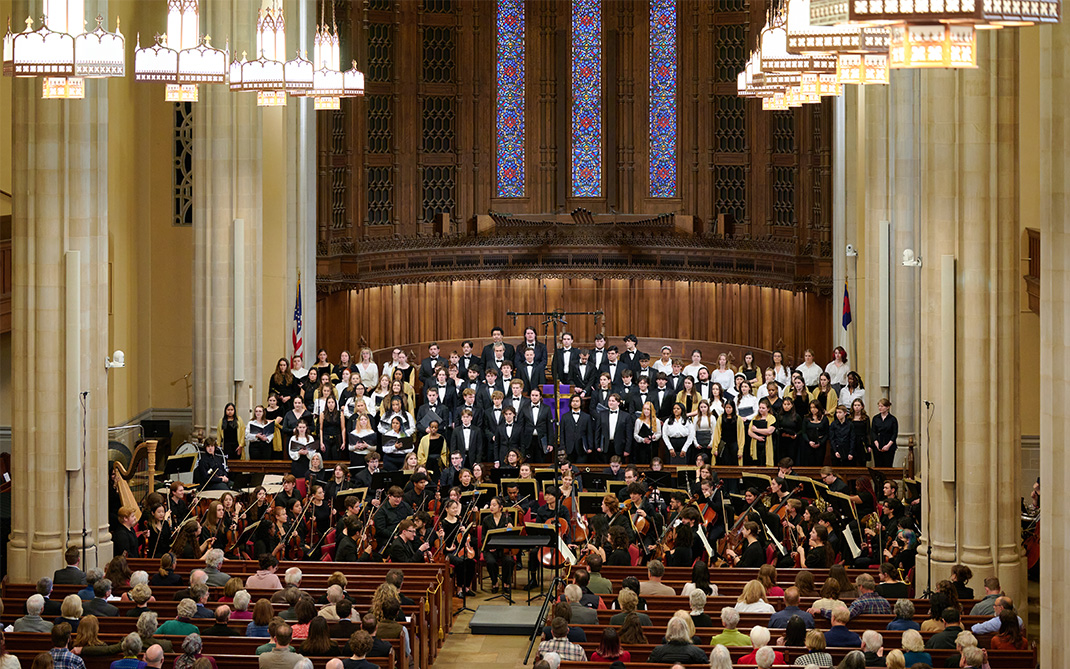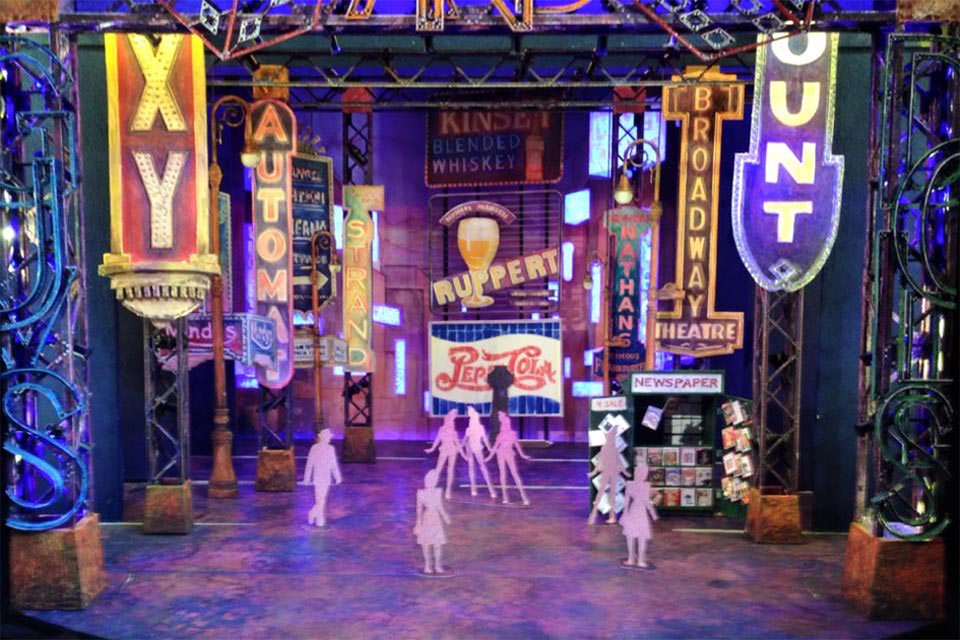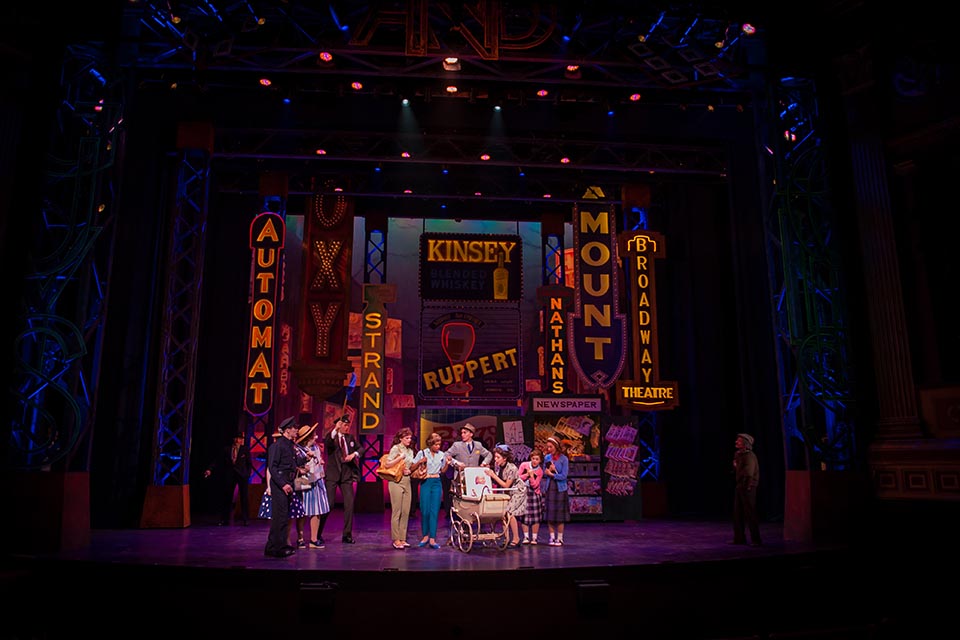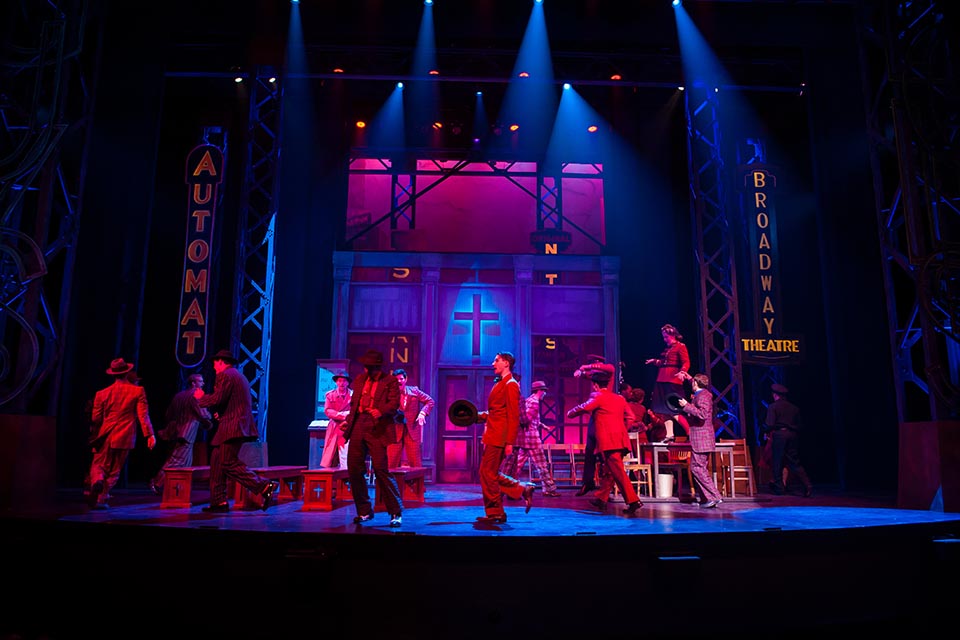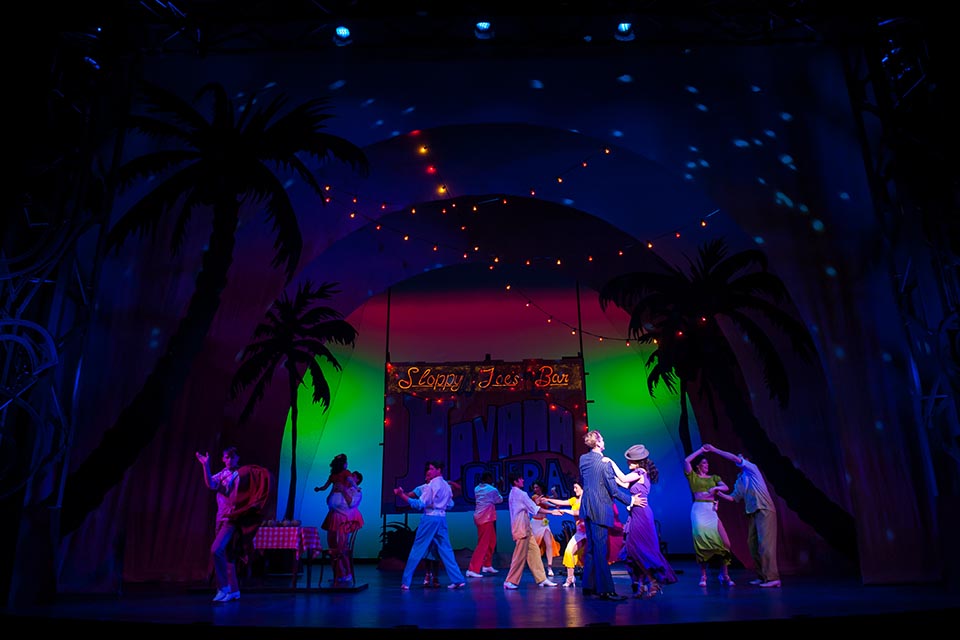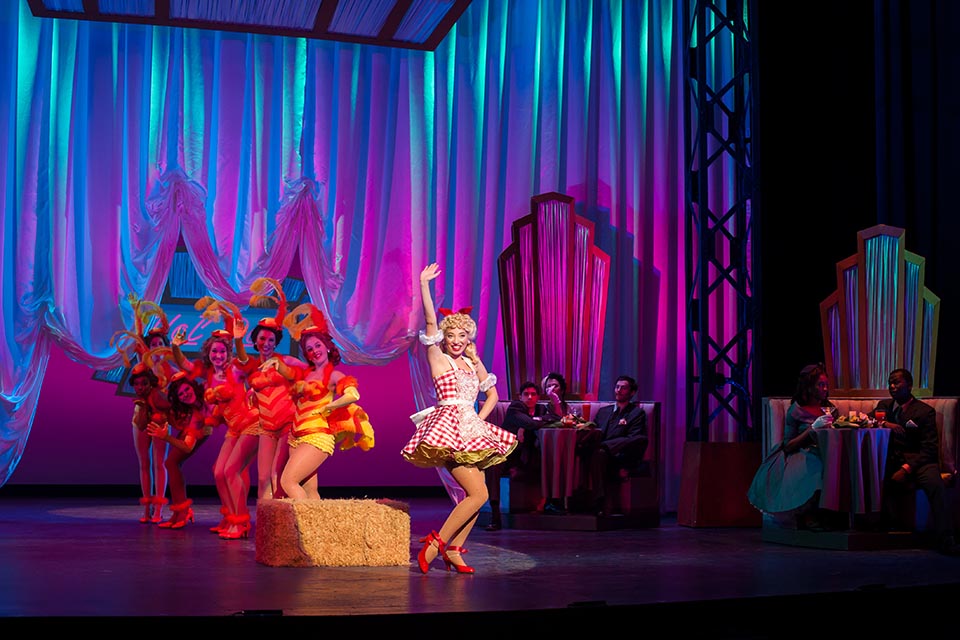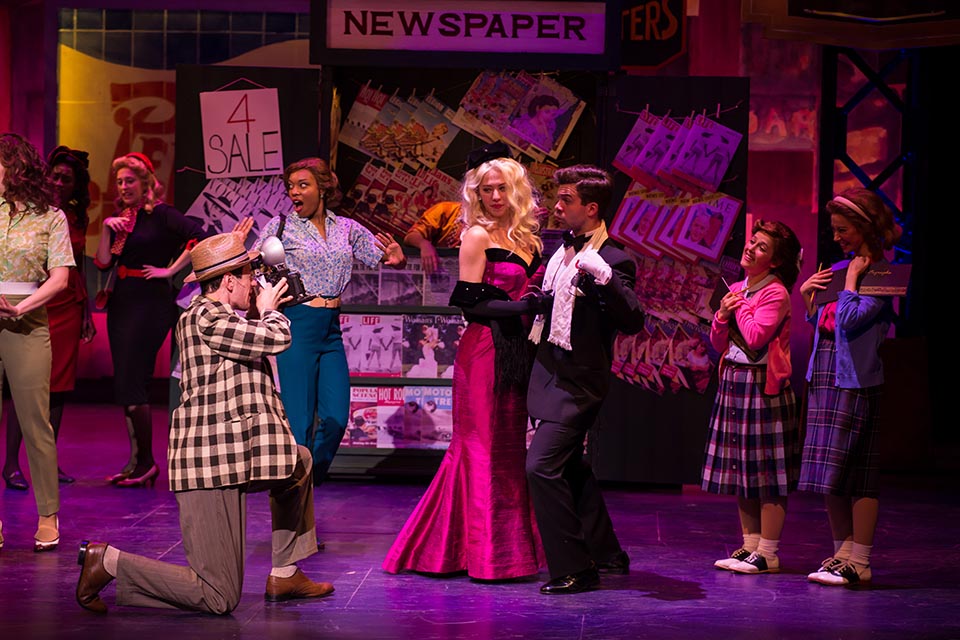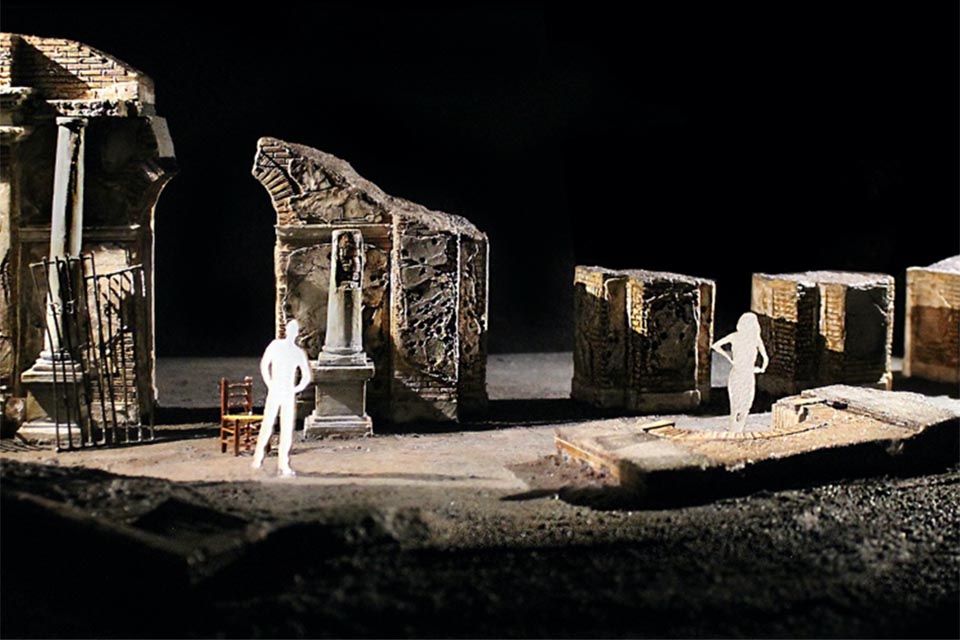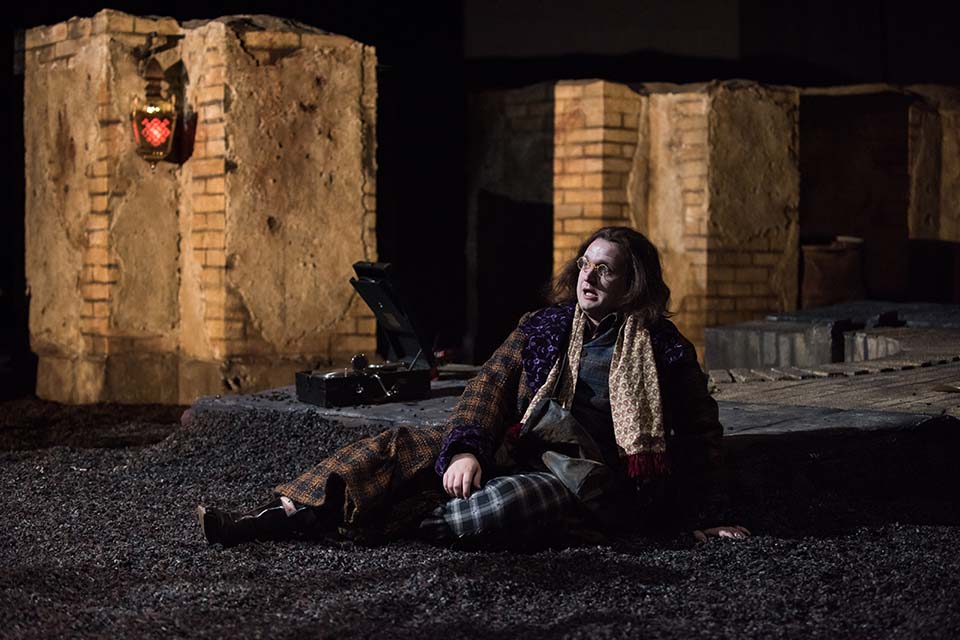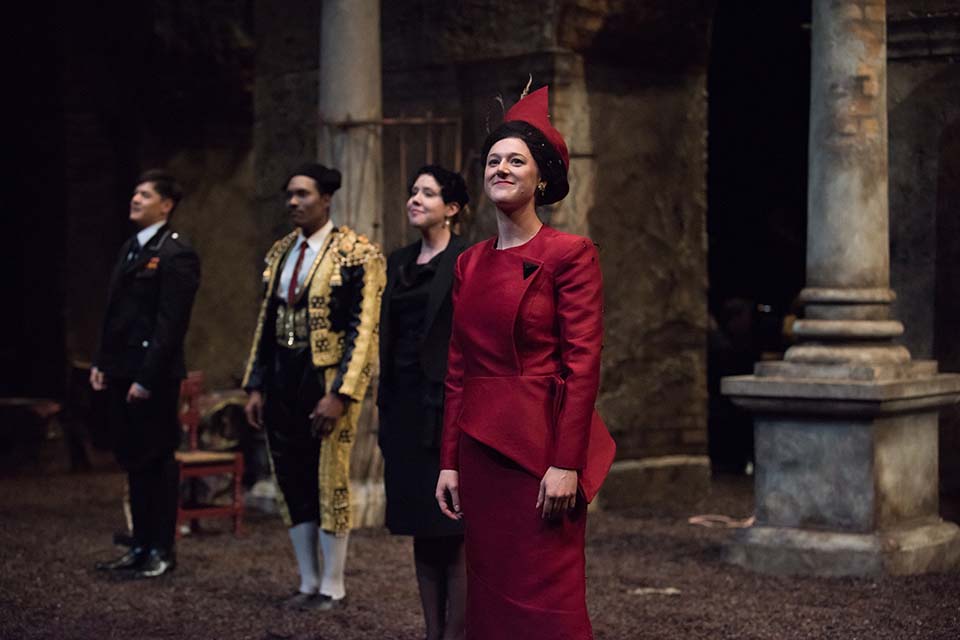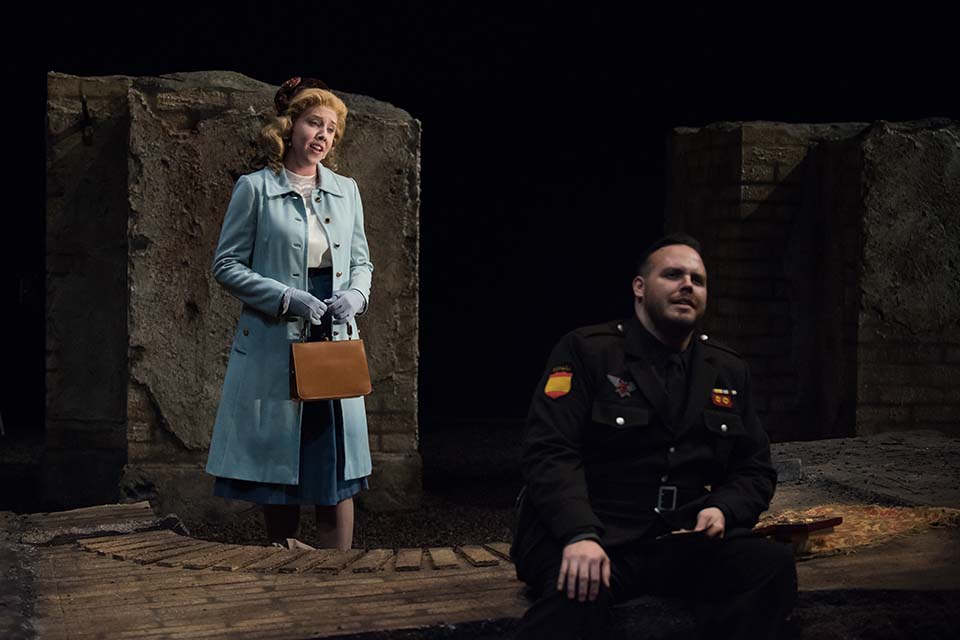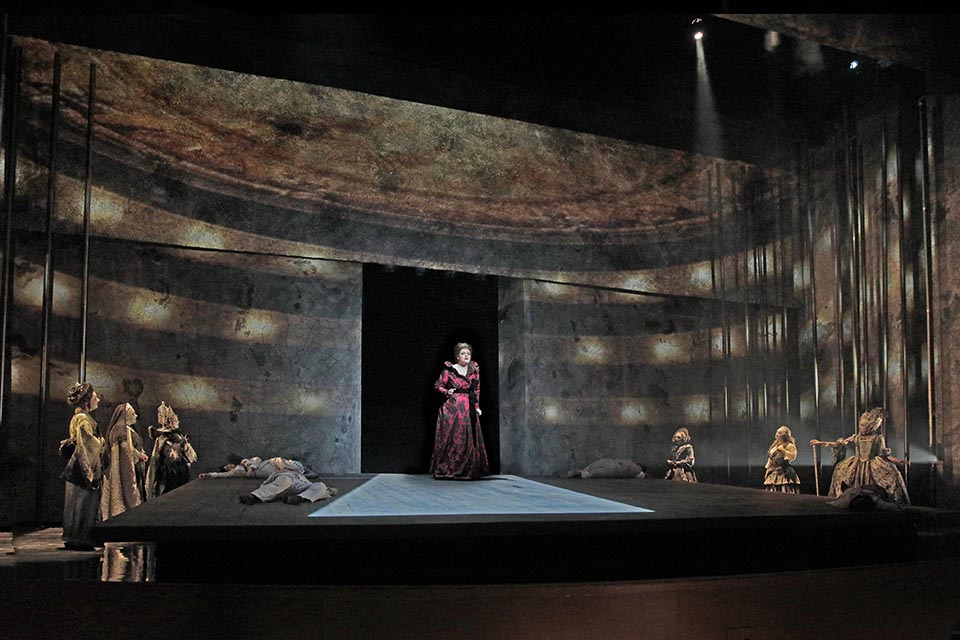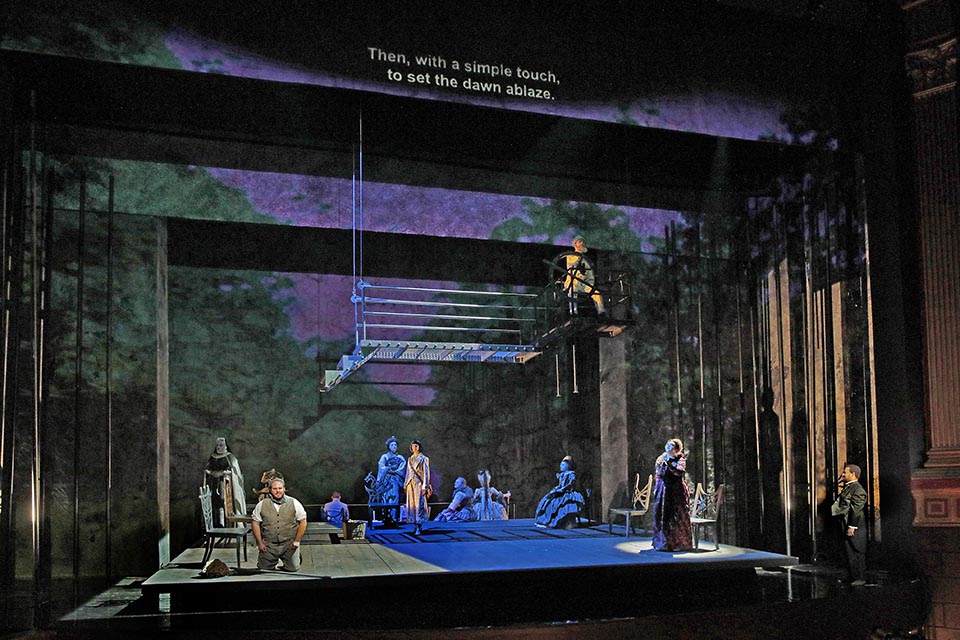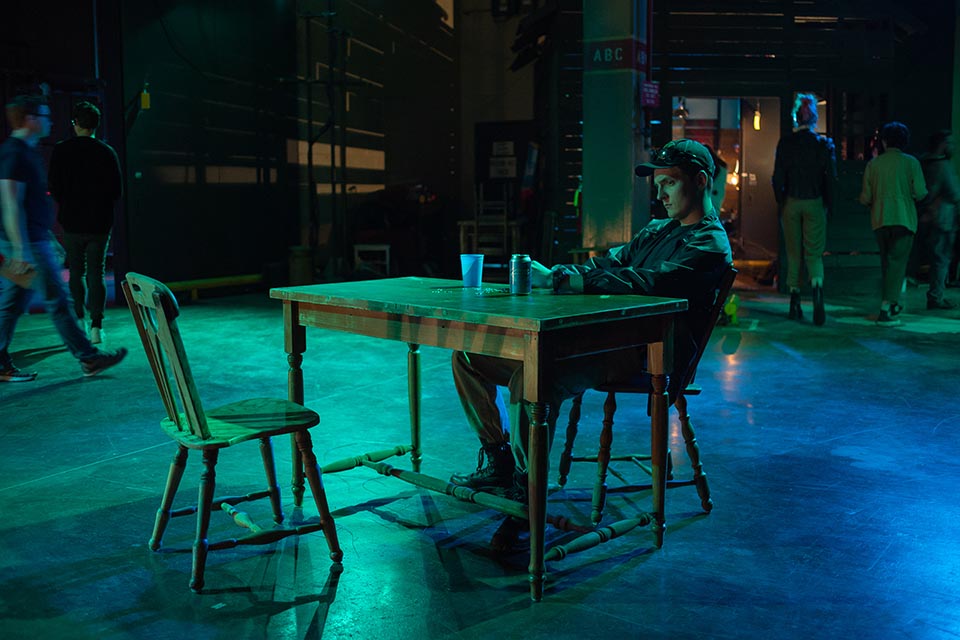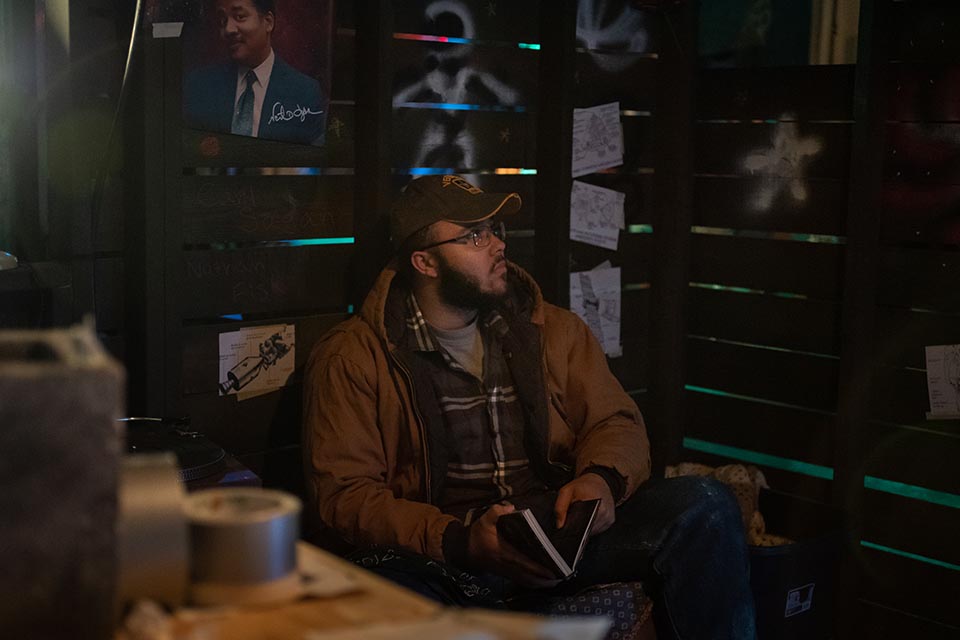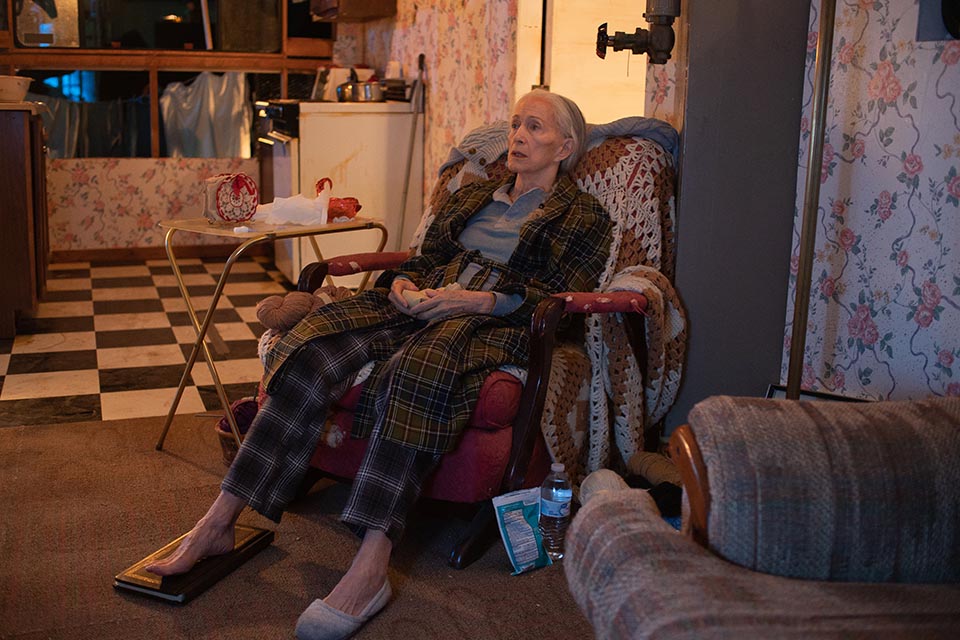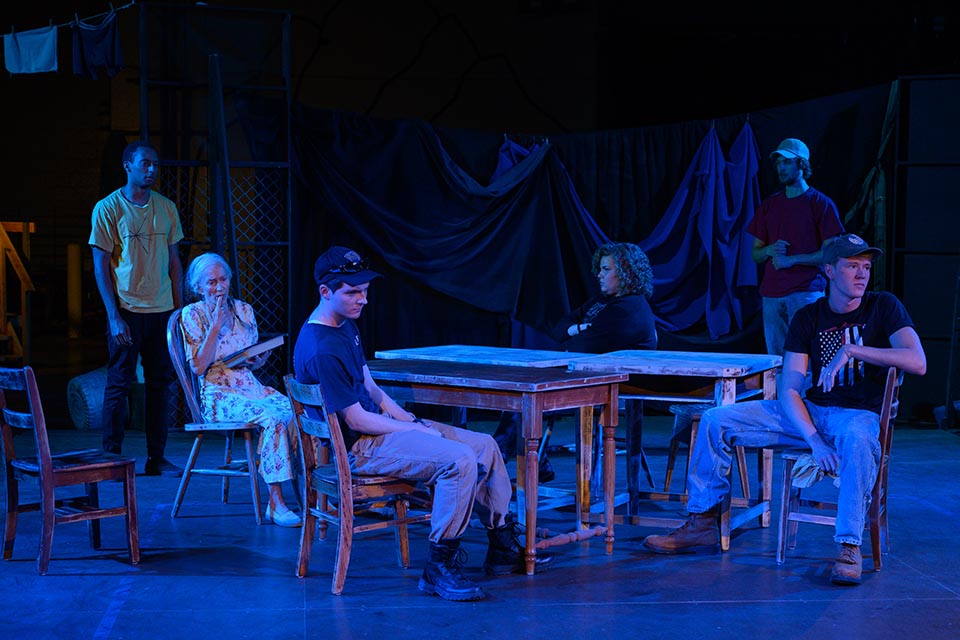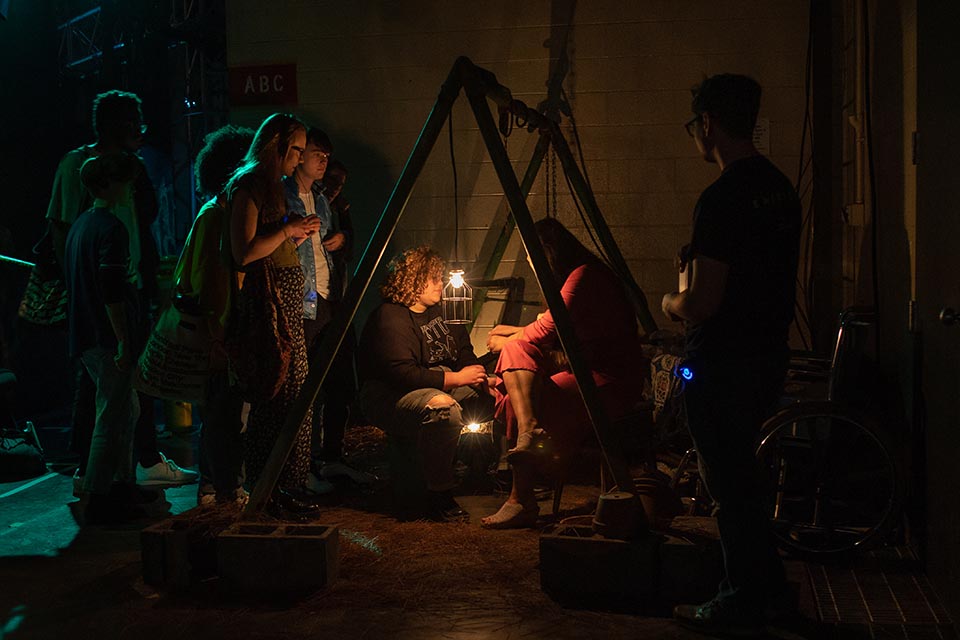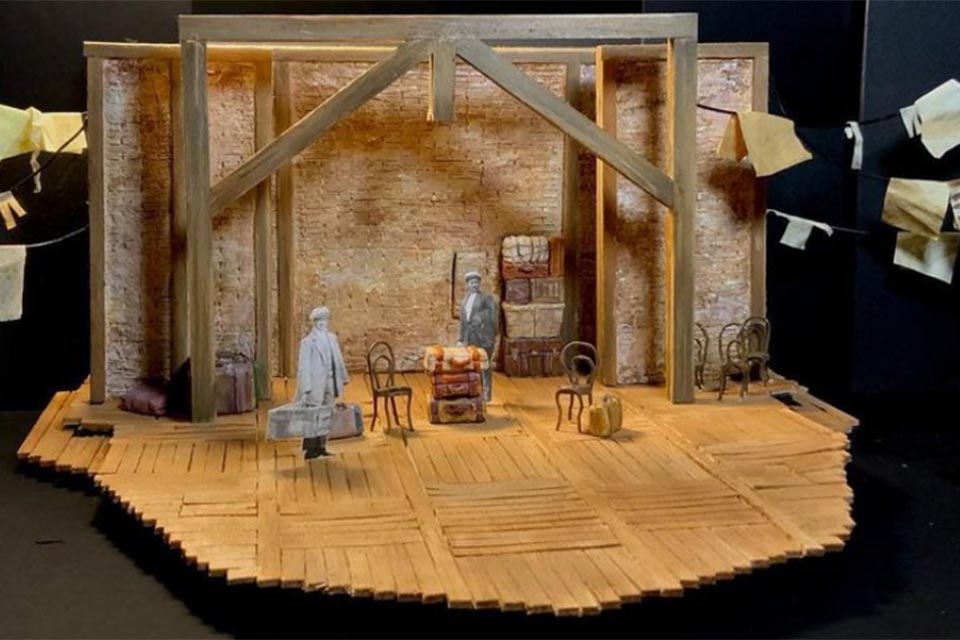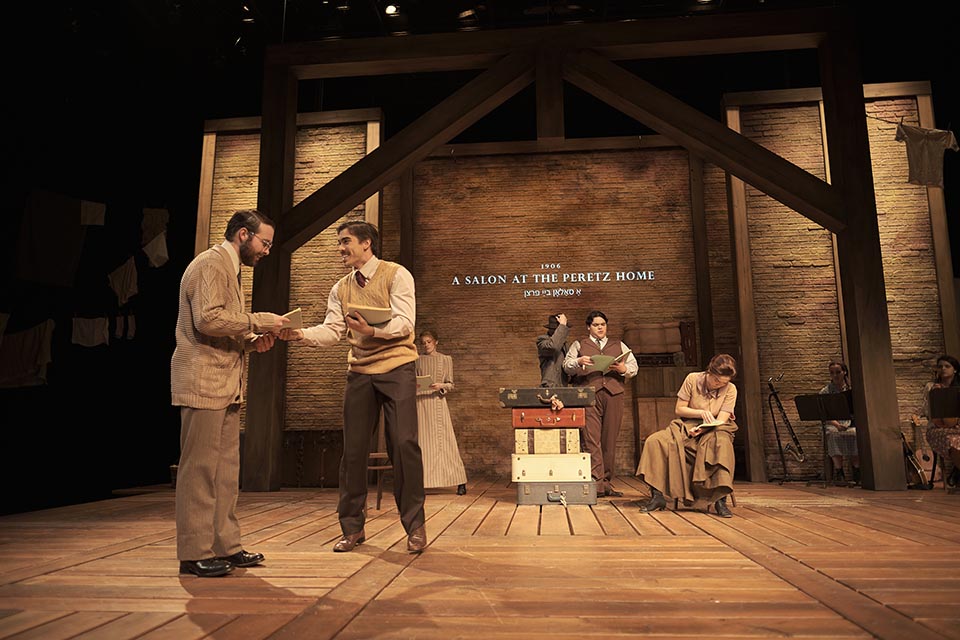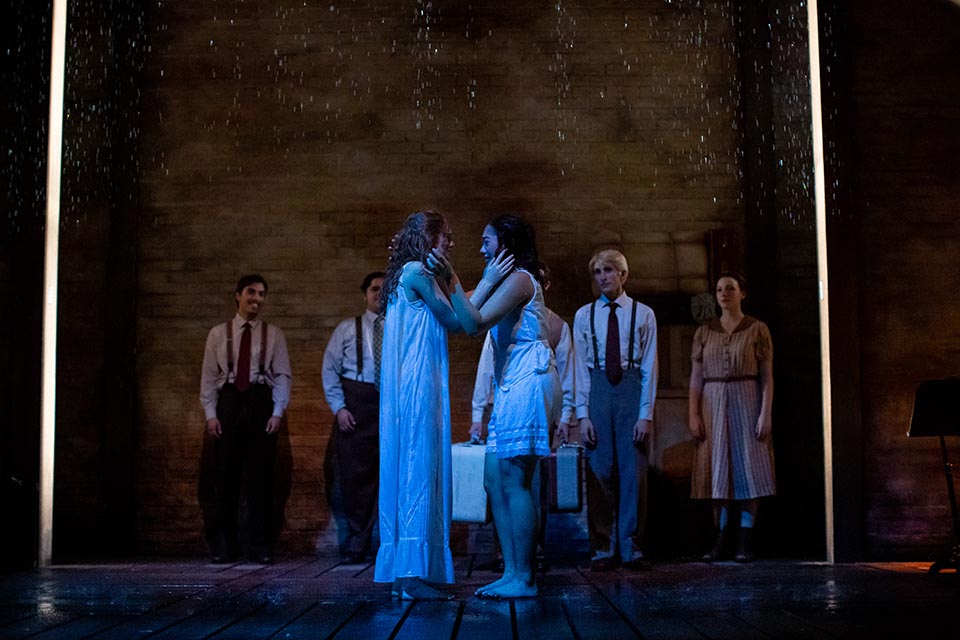14 impressive UNCSA scenic designs according to an expert
In the School of Design and Production’s Scene Design department, students work collaboratively with directors, choreographers, painters, prop makers and scenic technicians to create sets that are a critical part of the storytelling experience. While scene designs can range from literal to abstract, designers spend months researching to create a world for the audience that is unique to each individual creative work. At UNCSA, scene design students support around 15 shows per year, ensuring that graduates have a wide range of experience and are ready to hit the ground running.
We sat down with director of the UNCSA Scene Design program John Coyne to learn about his favorite designs that students have created during his time as a faculty member. Shows are listed chronologically by year.
“Into the Woods”
One of the late Stephen Sondheim’s most famous works, “Into the Woods,” was performed in 2013, directed by Jack Cummings III and scenic designed by Joe Rawda. “What I love about this design is that Joe really leaned into the storybook aspect of the show,” explains Coyne. Rawda created a sculptural set of different storybooks that were opened and stacked, and designed other elements such as trees and the beanstalk that looked like they were created out of book pages. “Since this show was in Freedman Theatre, we utilized the turntable so that it became different scenes, adapting and changing throughout the musical,” says Coyne. Referring to this design as “whimsical” and “fun,” Coyne loved that Rawda limited the color palette, which allowed for the costume and lighting design teams to play with color in a fun way.
“Dying for it”
Coyne describes “Dying for It,” a 2014 School of Drama production, as fast paced and high comedy. “What I loved about this design is that it took this idea of a doorway and made a whole set out of it,” explains Coyne. “Reilly Miller created a design that consisted of dozens of doors that were found, bought and dug up that led to a very unconventional use of space.” Coyne adds that during the show the doors were always a surprise because when they were opened the audience never knew what would be behind one and also kept the story moving quickly.

"Dying for it" scene designed by Reilly Miller. / Photo: Drew Davis
“Looking Back”
Coyne adds “Looking Back,” a 2015 contemporary dance piece choreographed by School of Dance faculty Trish Casey, to his list as an example of a scene design that had to be both minimal and impactful. “Jessica Cancino created a beautiful statement that was bold and graphic and paired well with the work done by the lighting team and the dance costume shop,” says Coyne. He adds that the scenic department enjoys working on dance pieces in addition to Drama, because it is always a great chance for the scenic painters to “work their muscles.”

"Looking Back" scene designed by Jessica Cancino. / Photo: Rosalie O'Connor
“Guys and Dolls”
One of many ‘all school musicals’ that have been produced at UNCSA, “Guys and Dolls” was performed in 2015 as a 50th anniversary celebration of the founding of our school. “We wanted to ‘pull out all the stops’ for this design and create a show that was reminiscent of a golden age musical in a big way,” explains Coyne. Directed by Gus Kaikkonen, Coyne says that “Guys and Dolls” was a “huge undertaking that incorporated every department in Design & Production in a really beautiful way.” He describes the scene design by Garrett Daub as a “thorough and complete way to tell the story,” and believes that the production ended up being a crowd pleaser. “As long as I’ve been here, this is the biggest show we’ve done to date — both in budget and scope and scale. It was definitely something that the whole school had to commit to.”
“Joe Turner’s Come and Gone”
Coyne notes that the 2016 production of “Joe Turner’s Come and Gone,” a part of August Wilson’s famous group of plays known as the Century Cycle, was exceptional because of the attention to detail that Andrew Licout used in his design. Set in pre-WWI Pittsburgh, Coyne explains that “the construction of the set, costume design and the dressing of the props gave the audience what felt like an authentic view of a boarding house during that time period.” Directed by Tim Douglas, Coyne says this production was a great example of the design teams doing extensive research. “Licout researched how houses would have been constructed during the time period and built that into the design for a more complete storytelling experience,” he adds.

"Joe Turner's Come and Gone" scene designed by Andrew Licout. / Photo: Peter Mueller
“La Tragédie de Carmen”
In addition to designing for the Schools of Drama and Dance, the scene design department designs sets for both the Winter and Spring opera performances each year. Coyne adds the 2016 performance of the iconic opera “Carmen,” to his list which he recalls being a challenge to design because it was held in the Gerald Freedman Theatre in Performance Place, an uncommon opera venue on our campus. “It was interesting for scenic designer Dustin Vandenburg to explore opera in a thrust space,” he explains. Coyne adds that Vandenburg decided to create a set that was reminiscent of coliseum ruins that was stationary and relied on lighting and props to shift through the different locations in the show.
“The Last Days of Judas Iscariot”
Coyne lists the 2016 Drama production of “The Last Days of Judas Iscariot” as one of the least expensive, yet highly impactful, sets of its scale created for a production. “Kate Fester created this complete world of a courtroom in purgatory, utilizing only broken down construction pallets,” Coyne explains. Describing the set as “evocative,” Coyne says that “the lighting designer got to have fun with a sculptural landscape, and the entire design team really leaned into both the absurdity and the drama of the play.”

"The Last Days of Judas Iscariot" scene designed by Kate Fester. / Photo: Peter Mueller
“Florencia en el Amazonas”
Coyne lists the 2017 A.J. Fletcher production of “Florencia en el Amazonas” as a set that was modern and highly abstract. Another show designed by Licout, Coyne says what stood out is that it “allowed the lighting team to utilize projections on a large scale that ended up being very dynamic.” Coyne adds that Licout’s design allowed for a versatile backdrop that transformed between a boat on the Amazon River and opera houses throughout the world.
“Peter and the Starcatcher”
The 2018 production of “Peter and the Starcatcher,” a prequel story to “Peter Pan,” makes Coyne’s list as a set design that created a world that was inventive and immersive. “The stage came out into the middle of the audience, and featured a great system of ropes, ladders and scaffolding that led to the actors three dimensionally using the space throughout the show,” he explains. Coyne adds that scene designer Rachel Miller included elements like the use of paint on the floor to make the audience feel like they were immersed in a pool of water.

"Peter and the Starcatcher" scene designed by Rachel Miller. / Photo: Peter Mueller
“OTMA”
A look at the life of the Romanov daughters in captivity, “OTMA” was a 2018 Drama production that was unique, in that only the scene design and props teams created the set without the usual support of the scenic technology department. “Designer Taja Seafus thought to use yarn to create a web-like atmosphere that seemed more like an installation piece instead of a traditional set,” says Coyne. Since the story of the play pulls in themes of sisterhood and memories, Coyne adds that the set “connected those elements in a way that felt cohesive but still minimal.”

"OTMA" scene designed by Taja Seafus. / Photo: Peter Mueller
“Still Life with Rocket”
As the first work of devised theater that the School of Drama has developed, the 2019 production of “Still Life with Rocket” was performed at a found space instead of one of the UNCSA performance venues. “It was quite an undertaking in the best way, because we held this production at an old Reynolds Tobacco flavoring plant, which was a unique challenge to our three scene designers Nadir Bey, Taja Seafus and Erin Ashbaugh,” explains Coyne. “This is being done more and more in the industry with the boom of immersive entertainment, so it was a great opportunity for our students to work with a new space in this capacity,” he adds.
Directed by faculty member Mollye Maxner, the cast was still developing the script throughout the rehearsal process so Coyne adds that the scene designers had to be very flexible in their creative process. “In collaboration with all of the departments, but especially stage properties, the scene designers developed all of these scenarios and tableaus of different parts in the world of the story they were telling.”
“Spring Awakening”
The 2019 production of “Spring Awakening,” another well-known, though more recent, rock musical, featured “a beautiful set and extraordinary attention to detail throughout every department,” according to Coyne. Designed by Keven McBee, Coyne explains that all of the props for the show were “individually designed, hand built and worked with the storytelling of this gothic industrial world,” and adds that the prop work was some of the best he has ever seen.

"Spring Awakening" scene designed by Kevin McBee. / Photo: Peter Mueller
Learn more about the prop work from “Spring Awakening” here.
“Scenes from an Execution”
“Graphic” and “bold” are the two main words Coyne uses to describe the set design for “Scenes from an Execution,” a play set in the late 18th century. Directed by School of Drama faculty member Carl Forsman, Coyne states that even though this 2019 production had a more limited budget than other shows, scenic designer Brett Sellitti was able to create an impactful and memorable design. “The set had multiple locations, so Brett used scaffolding that was versatile and could be moved easily,” says Coyne. He also explains that by working closely with the costume and lighting teams, they were able to create gorgeous tableaus where the characters really popped out.

"Scenes from an Execution" scene designed by Brett Sellitti. / Photo: Peter Mueller
“Indecent”
Brought to the stage in Fall 2021, “Indecent” tells the story of the controversy surrounding the play “God of Vengeance,” which led to the first lesbian kiss on Broadway. “The most impressive part of this set design is that we were able to make it rain on stage, which is something that we have been wanting to do for years,” explains Coyne. Set designer Leo Murphy worked closely with the scenic technology and props departments to create a set where it would rain every night and collect the water underneath the floorboards. Coyne adds that Murphy “created a set that was reminiscent of an attic, but could still remain versatile to become the numerous locations that are featured throughout the play.”
Get the best news, performance and alumni stories from UNCSA.
SUBSCRIBE TO OUR NEWSLETTERS(OPENS IN NEW TAB)(OPENS IN NEW TAB)(OPENS IN NEW TAB)(OPENS IN NEW TAB)
December 15, 2021
